Home>diy>Architecture & Design>How To Design A Builder-Grade House
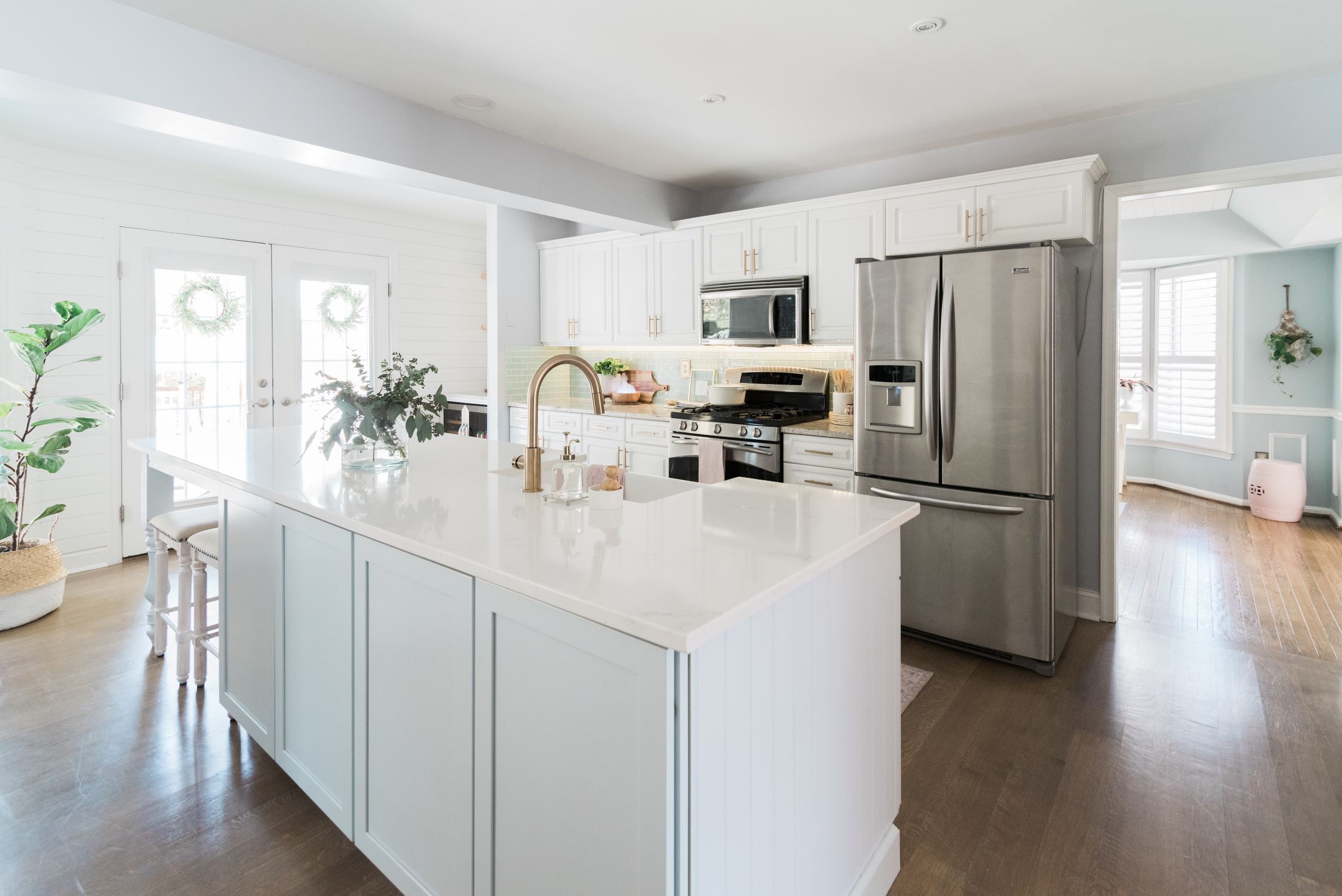

Architecture & Design
How To Design A Builder-Grade House
Modified: March 24, 2024
Looking for tips on architecture design for your builder-grade house? Discover how to transform your home with our expert advice and create a stunning living space.
(Many of the links in this article redirect to a specific reviewed product. Your purchase of these products through affiliate links helps to generate commission for Storables.com, at no extra cost. Learn more)
Introduction
Welcome to the world of builder-grade houses – homes that are mass-produced and standardized to offer an affordable housing solution for many people. While these houses may lack the charm and character of custom-built homes, they provide a blank canvas for homeowners to personalize and create a space that reflects their style and taste.
In this article, we will explore the art of designing a builder-grade house. We will discuss various considerations, from floor plans and exteriors to interior design and budgeting. Whether you are looking to remodel an existing builder-grade house or are in the process of building a new one, this guide will provide you with valuable insights and ideas to transform your house into a home that stands out.
Designing a builder-grade house requires a thoughtful approach to make the most of its potential. By prioritizing certain aspects and making strategic design choices, you can elevate the overall look and feel of your home. From the layout to the finishes, there are numerous design elements to consider.
But before we delve into the details, let’s first gain a better understanding of what exactly defines a builder-grade house.
Key Takeaways:
- Designing a builder-grade house is an opportunity to transform a standardized space into a personalized and inviting home by considering factors such as floor plans, materials, finishes, and personal touches.
- By embracing creativity, adding personal touches, and making intentional design choices, homeowners can create a high-end look without breaking the bank, infusing their builder-grade house with unique personality and transforming it into a sanctuary that truly feels like home.
Read more: How To Grade Drainage Away From The House
Understanding Builder-Grade Houses
In order to effectively design a builder-grade house, it is important to have a clear understanding of what distinguishes it from other types of homes. Builder-grade houses are typically built by developers on a large scale with the intention of being affordable and easy to construct. As a result, these houses often have a more generic and standardized design, lacking the unique features and customization options found in custom-built homes.
Builder-grade houses are often characterized by their simple and functional layouts. The focus is on practicality and efficiency rather than intricate architectural details. These houses are built quickly and efficiently using standardized floor plans and materials, making them more cost-effective for both builders and buyers.
While builder-grade houses may lack the customizability and craftsmanship of higher-end homes, they offer an opportunity for homeowners to put their own personal stamp on the design. With strategic planning and design choices, you can transform a builder-grade house into a beautiful and unique space that reflects your style and personality.
Another aspect to consider when understanding builder-grade houses is the importance of optimizing the budget. Since these houses are designed with affordability in mind, it’s crucial to make strategic decisions when it comes to selecting materials and finishes. Finding cost-effective options without compromising on quality is a key factor in successful builder-grade house design.
Now that we have a better grasp of what defines a builder-grade house, let’s move on to the considerations you should keep in mind when designing your own builder-grade home.
Considerations for Designing a Builder-Grade House
Designing a builder-grade house provides a unique set of challenges and opportunities. By considering certain factors, you can transform your house into a personalized and inviting space that suits your lifestyle and aesthetic preferences.
One important consideration is the layout of your builder-grade house. While you may not have complete control over the floor plan, there are still ways to optimize the space to meet your needs. Think about how you utilize each room and consider any modifications that can improve functionality. This could involve removing non-load-bearing walls to create an open-concept layout or reconfiguring rooms to maximize their potential.
When designing your builder-grade house, it’s also important to prioritize storage solutions. Many builder-grade homes lack sufficient storage options, so incorporating creative storage solutions can help keep your home organized and clutter-free. Consider built-in shelving, custom closets, or even multi-functional furniture with hidden storage compartments.
Additionally, pay attention to the flow and circulation within your home. Ensure that the main living areas are connected and easily accessible. Creating a natural flow between spaces enhances the overall functionality and livability of your builder-grade house.
The next consideration is selecting materials and finishes that elevate the look and feel of your home. While builder-grade houses typically come with standard finishes, such as basic flooring and basic cabinetry, you can upgrade these elements to add a touch of luxury and personalization. Opt for high-quality flooring materials, stylish cabinetry, and modern fixtures to elevate the overall aesthetic of your home.
Budget is always an important aspect to consider in any home design project, and this holds especially true for builder-grade houses. Determine your budget early on and make strategic decisions to get the most out of your money. Prioritize areas that will have the most impact, such as the kitchen or master bathroom, and find cost-effective alternatives for other areas to keep within your budget.
Lastly, consider the future resale value of your builder-grade house. While you may have plans to stay in your home for an extended period, it’s always a good idea to think about potential buyers down the line. Design choices that appeal to a wide range of tastes and preferences can increase the attractiveness and value of your home.
Now that we have explored some important considerations for designing a builder-grade house, let’s move on to discussing how to choose the right floor plan to suit your needs.
Choosing the Right Floor Plan
Selecting the right floor plan is a crucial step in designing your builder-grade house. The layout and configuration of your home will impact how you and your family function within the space, as well as the overall aesthetic appeal. Here are some factors to consider when choosing the right floor plan:
Family Needs: Assess the needs and lifestyle of your family. Consider factors such as the number of bedrooms and bathrooms required, as well as the need for open communal spaces or separate areas for privacy.
Functional Spaces: Think about how you will utilize each room and ensure that the floor plan supports your day-to-day activities. Consider the flow and ease of movement between rooms, as well as the proximity of essential spaces like the kitchen, dining area, and living room.
Flexibility: Look for a floor plan that offers flexibility and adaptability. Consider whether there are options for future expansion or modification, such as unfinished areas that can be converted into additional living spaces as your needs change over time.
Privacy: Assess the level of privacy provided by the floor plan. Consider the placement of bedrooms and whether they are located in separate areas of the house to ensure comfort and privacy for all family members.
Outdoor Connection: If outdoor living is important to you, consider how the floor plan integrates with outdoor spaces such as a backyard, patio, or deck. Look for floor plans that offer easy access to outdoor areas and consider options for incorporating outdoor living features into the design.
Aesthetic Appeal: Evaluate the overall aesthetic appeal of the floor plan. Consider the architectural style, the presence of desirable features such as large windows for natural light, and the potential for customization to match your personal taste and style.
When choosing a floor plan, it can be helpful to create a list of must-haves and nice-to-haves to guide your decision-making process. Prioritize the features that are most important to you and your family, and be prepared to make compromises where necessary.
Additionally, it’s essential to have a realistic understanding of the size and scale of the floor plan. Take into consideration the square footage of the rooms and the overall layout to ensure that it aligns with your needs and preferences. Visualize how your furniture and belongings will fit within the space to ensure that it will be functional and comfortable.
By carefully considering these factors and selecting a floor plan that meets your specific requirements and preferences, you can create a builder-grade house that suits your lifestyle and maximizes the potential of the space. With the floor plan chosen, it’s time to move on to designing the exterior of your home.
Designing the Exterior
The exterior of your builder-grade house is the first impression people will have of your home, so it’s important to make it visually appealing and reflective of your personal style. Here are some considerations when designing the exterior:
Architectural Style: Determine the architectural style you desire for your home. Whether it’s modern, traditional, farmhouse, or something else, choose an architectural style that resonates with your personal taste and complements the surrounding neighborhood.
Color Palette: Select a cohesive color palette for the exterior of your house. Consider the materials used, such as siding, brick, or stone, and how the colors will interact. Opt for a combination of colors that creates harmony and visual interest while reflecting your personal style.
Materials: Choose durable and high-quality materials for your home’s exterior. Consider options like fiber cement siding, brick veneer, or stucco, depending on your preferred aesthetic and maintenance requirements.
Entryway: Pay special attention to the entryway of your home as it sets the tone for the overall design. Enhance it with a stylish front door, well-designed porch or entry area, and appropriate lighting to create an inviting and welcoming feel.
Windows: Windows play a crucial role in the aesthetic appeal of your home’s exterior and the amount of natural light that enters the interior. Choose windows that complement the architectural style and provide both functionality and visual appeal.
Landscaping: Landscaping is an important aspect of the exterior design. Consider hiring a professional landscaping service or work on it yourself to create a well-manicured lawn, beautiful flower beds, and attractive hardscape features that enhance the curb appeal of your home.
Details and Accents: Add character and charm to your home’s exterior with details and accents. This could include architectural trim, decorative shutters, or unique features like a covered porch or balcony.
Street Appeal: Consider how your home will look from the street. Pay attention to the proportions, symmetry, and overall aesthetics to create a visually pleasing focal point that stands out in a positive way.
Continuity: Ensure that the exterior design of your home is consistent and flows well with the surrounding houses. While you want your home to stand out, you also want it to blend harmoniously with the neighborhood to maintain its value and appeal.
When designing the exterior of your builder-grade house, take your time to plan and consider all the elements mentioned above. By carefully selecting architectural styles, materials, colors, and details, you can create a visually striking and inviting exterior that sets the tone for what awaits inside.
Next, we’ll explore the process of selecting materials and finishes for your builder-grade house.
Selecting Materials and Finishes
When it comes to designing a builder-grade house, selecting the right materials and finishes can make a significant difference in enhancing the overall aesthetic and value of your home. Here are some considerations to keep in mind:
Flooring: Choose flooring materials that not only complement your design style but are also durable and easy to maintain. Options such as hardwood, laminate, tile, or luxury vinyl are popular choices due to their versatility and longevity.
Countertops: The kitchen and bathroom countertops can become the centerpiece of your design. Consider materials such as granite, quartz, or marble, which offer both visual appeal and durability.
Cabinetry: Opt for high-quality cabinetry that suits your design style and storage needs. Customize the finishes and hardware to reflect your personal taste, creating a cohesive look throughout your home.
Lighting Fixtures: Lighting fixtures can greatly impact the atmosphere and functionality of each room. Choose fixtures that complement your overall design aesthetic while providing adequate lighting for each space.
Paint Colors: Paint is a quick and cost-effective way to transform the look of your builder-grade house. Choose a color palette that enhances the desired mood and reflects your personal style. Consider using accent walls or different paint finishes to add depth and visual interest.
Hardware: Pay attention to the small details, such as door handles, cabinet pulls, and faucets. They may seem insignificant, but they can contribute significantly to the overall design and cohesiveness of your home.
Backsplash: A well-chosen backsplash in the kitchen or bathroom can bring a unique focal point and add visual interest. Consider options like subway tile, mosaic patterns, or natural stone to enhance the style and character of the space.
Appliances: Selecting the right appliances is not just about functionality but also about aesthetics. Choose appliances that fit seamlessly into your design style, whether it’s sleek and modern or classic and timeless.
Hardware: Pay attention to the small details, such as door handles, cabinet pulls, and faucets. They may seem insignificant, but they can contribute significantly to the overall design and cohesiveness of your home.
Materials: When selecting materials and finishes, consider their compatibility and coherence with the overall design scheme. Ensure that the chosen materials work well together to create a cohesive and harmonious look throughout your builder-grade house.
Considerations: Take into account factors such as durability, maintenance requirements, and budget when selecting materials and finishes. Choose options that not only meet your design preferences but also provide long-term functionality and value.
Remember, the materials and finishes you choose should reflect your personal style and create a cohesive and visually appealing look throughout your home. The right selection can elevate the design of your builder-grade house, transforming it into a space that feels custom and unique.
Next, we’ll dive into the world of interior design and explore how to optimize the layout and create a functional and aesthetically pleasing space inside your home.
Interior Design and Layout
When it comes to interior design and layout, the goal is to create a functional and aesthetically pleasing space that reflects your personal style and meets your lifestyle needs. Here are some key considerations to keep in mind:
Functionality: The layout of your builder-grade house should prioritize functionality. Consider how you will use each room and ensure that the furniture placement allows for easy movement and accessibility. Optimize traffic flow and create designated spaces for different activities, such as a dedicated workspace or a cozy reading nook.
Open-Concept Living: If your builder-grade house allows for it, consider an open-concept layout for the main living areas. This design approach creates an expansive and versatile space that is ideal for entertaining and socializing.
Furniture Selection: Choose furniture that is both stylish and functional. Measure the rooms carefully to ensure that the furniture fits properly and allows for comfortable seating and traffic flow. Consider the scale and proportion of the furniture in relation to the room to create a balanced and visually pleasing arrangement.
Color Scheme: Select a color scheme that sets the desired mood and complements your design style. Consider using a neutral base color and incorporating pops of color through accessories or accent walls for visual interest. Be mindful of the lighting in each room, as it can affect the perceived color and ambiance.
Window Treatments: Window treatments not only provide privacy but also add texture and style to a room. Consider options such as curtains, blinds, or shades that enhance the overall design while allowing for control of natural light.
Storage Solutions: Builder-grade houses often lack sufficient storage options, so incorporate creative storage solutions into your design. Utilize vertical space with floor-to-ceiling shelving or consider built-in storage solutions to maximize the use of available space.
Personalization: Infuse your personal style and interests into the design of your builder-grade house. Display meaningful artwork, family photographs, or curated collections to make the space feel uniquely yours.
Lighting: Lighting plays a crucial role in creating the desired ambiance and functionality within your home. Incorporate a mix of ambient, task, and accent lighting to illuminate each space effectively. Consider installing dimmer switches to adjust the intensity of light, allowing for different moods and settings.
Accessories: The right accessories can add personality and charm to your builder-grade home. Incorporate decorative items such as rugs, throw pillows, artwork, and plants to create a layered and inviting space.
Balance: Strive for a balanced design by incorporating elements of symmetry and visual equilibrium. This can be achieved through the arrangement of furniture, placement of artwork, or the use of color and pattern.
Comfort: Lastly, prioritize comfort in your design choices. Choose furniture and fabrics that are comfortable and inviting, ensuring that you and your guests can relax and enjoy your home to the fullest.
By paying attention to these considerations, you can create a well-designed and thoughtfully laid out interior space that maximizes the potential of your builder-grade house. Creating a welcoming and aesthetically pleasing environment will make your house feel like a home.
Once you have honed in on the interior design and layout, it’s time to consider your budget and explore cost-effective design options. We will discuss this in the next section.
When designing a builder-grade house, focus on adding personalized touches such as upgraded fixtures, hardware, and finishes to elevate the overall look and feel of the space.
Budgeting and Cost-effective Design Options
When designing a builder-grade house, budgeting is a crucial aspect to consider. While it’s important to create a beautiful and personalized space, it’s equally important to be mindful of your budget. Here are some budgeting strategies and cost-effective design options to help you make the most of your investment:
Create a Realistic Budget: Before diving into any design decisions, create a realistic budget that takes into account all aspects of the project, including materials, labor, and unexpected expenses. Be sure to allocate funds for each area of the house, prioritizing the ones that will have the most impact on overall aesthetics and functionality.
Prioritize the Essentials: Identify areas that are the most important to you and allocate a larger portion of your budget to those spaces. For example, if you love to cook, you might want to invest more in high-quality kitchen appliances and finishes.
Repurpose and Upcycle: Instead of buying all new furniture and decor items, consider repurposing or upcycling existing pieces. Give new life to old furniture with a fresh coat of paint or reupholstering. Explore thrift stores and garage sales for unique finds that can be refurbished to fit your style.
Cost-effective Materials and Finishes: Look for cost-effective alternatives to high-end materials without sacrificing quality. For example, consider using laminate countertops instead of expensive granite or quartz. Additionally, shop around and compare prices to find the best deals on flooring, lighting fixtures, and other materials.
Mix High and Low-end Pieces: Balance your budget by mixing high-end and budget-friendly pieces. Invest in key furniture items that will stand the test of time, while selecting more affordable accessories and accents.
DIY Projects: Take on some do-it-yourself projects to save on labor costs. Simple tasks like painting walls, installing shelves, or even building custom furniture can be accomplished with some research and dedication.
Use Paint Strategically: Paint is one of the most cost-effective ways to transform the look of a space. Consider using paint to create accents, focal points, or to add depth and dimension to your builder-grade house.
Minimalist Approach: Embrace a minimalist design approach, focusing on clean lines and less clutter. This not only creates a modern and sleek look but also reduces the need for excessive furnishings and decor.
Maximize Natural Light: Take advantage of natural light to enhance your space. Use light-colored curtains or blinds that can be fully opened during the day to allow the natural light to flood in, reducing the need for additional lighting fixtures.
Smart Shopping: Keep an eye out for sales, promotions, and discounts when shopping for materials and furniture. Explore online stores, local thrift shops, and clearance sections to find affordable yet stylish options.
Consult with Professionals: Consider consulting with professionals, such as interior designers or contractors, who can help you identify cost-effective options and make informed decisions within your budget constraints.
By implementing these budgeting strategies and exploring cost-effective design options, you can create a beautiful and functional space while keeping your finances in check. Remember, designing a builder-grade house doesn’t have to break the bank – it’s about making smart choices and prioritizing what matters most to you.
In the next section, we will explore how to maximize natural light in your builder-grade house, creating a bright and inviting atmosphere.
Maximizing Natural Light
Natural light can greatly enhance the ambiance and overall appeal of your builder-grade house. It creates a bright and inviting atmosphere while reducing the reliance on artificial lighting during the day. Here are some strategies to maximize natural light in your home:
Window Placement and Size: Consider the placement and size of windows when designing or renovating your builder-grade house. Position windows strategically to capture the most sunlight throughout the day. Opt for larger windows or additional windows in areas where natural light is essential, such as living rooms and kitchens.
Window Treatments: Choose window treatments that allow ample natural light to enter while still providing privacy and light control. Opt for sheer curtains, blinds, or shades that can be easily opened and closed, allowing natural light to flood in while maintaining privacy when needed.
Mirrors and Reflective Surfaces: Use mirrors strategically to reflect and amplify natural light. Place mirrors opposite windows to bounce light around the room, making the space feel brighter and more spacious. Incorporate reflective surfaces, such as metallic accents or glossy finishes, to further enhance the effect.
Light-colored Walls and Ceilings: Paint your walls and ceilings in light colors to maximize the reflection of natural light. Light shades, such as whites, pastels, or neutrals, reflect light better than darker hues, creating a brighter and more open feel in your home.
Trim Trees and Bushes: Trim any trees or bushes that may obstruct natural light from entering your windows. Cut back branches or foliage that cast shadows on your windows, allowing more sunlight to flow into your home.
Skylights and Light Tubes: Consider installing skylights or light tubes to bring in additional natural light, especially in areas with limited access to windows. Skylights can brighten up darker spaces like hallways, bathrooms, or stairwells, while light tubes can channel natural light from the roof into enclosed areas.
Open Floor Plan: An open floor plan allows natural light to flow seamlessly throughout different areas. Removing walls and partitions can create a better visual connection between spaces, allowing light to penetrate deeper into your home.
Keep Windows Clean: Regularly clean your windows inside and out to ensure they are free from dirt, dust, and grime. This allows maximum sunlight to pass through unobstructed, keeping your home bright and airy.
Utilize Light-colored Furniture and Decor: Choose light-colored furniture, upholstery, and decor items to reflect and amplify natural light. Opt for materials and finishes that have a light and airy feel, such as light-colored wood or glass, to further enhance the brightness in your space.
Minimize Obstructions: Arrange furniture and decor in a way that does not obstruct the flow of natural light. Avoid placing large furniture in front of windows and keep window sills free from clutter to allow maximum light penetration.
By implementing these strategies, you can harness the power of natural light in your builder-grade house, creating a bright, welcoming, and uplifting environment. It not only enhances the aesthetics of your home but also promotes a positive and healthy living environment.
In the next section, we will explore how to enhance the curb appeal of your builder-grade home, making a striking first impression for visitors.
Read more: What Is Grading In Landscaping
Enhancing Curb Appeal
The curb appeal of your builder-grade house sets the tone for the entire property and creates a welcoming first impression. Enhancing the exterior of your home can make it stand out in the neighborhood and increase its value. Here are some tips to enhance the curb appeal of your builder-grade house:
Landscaping: Invest in landscaping to create a well-maintained and visually appealing front yard. Trim bushes and trees, mow the lawn regularly, and add colorful flowers and plants to create a vibrant and inviting atmosphere.
Front Door Makeover: The front door is the focal point of your home’s exterior. Consider painting it in a bold and eye-catching color that complements the overall design. Add decorative hardware, such as a stylish doorknob or knocker, to enhance its visual appeal.
Outdoor Lighting: Install outdoor lighting fixtures to illuminate pathways, highlight architectural features, and create a warm and inviting ambiance during the evening. Well-placed lighting can not only enhance safety but also add a touch of elegance to your home’s exterior.
Exterior Paint: If permitted, consider repainting the exterior of your home to freshen up its look. Choose a color scheme that complements the architectural style and blends well with the surroundings. Ensure that the paint is high-quality and suitable for the specific materials used on your home’s exterior.
Improve the Driveway: Repair any cracks or damage on the driveway and consider sealing it to give it a fresh and well-maintained appearance. If the budget allows, consider upgrading to a more visually appealing material, such as brick or pavers, to enhance the overall aesthetic.
Upgrade House Numbers and Mailbox: Replace old and worn-out house numbers with new ones that complement the style of your home. Consider adding a stylish mailbox or giving it a fresh coat of paint to enhance its visual appeal.
Window Treatments: Install window boxes or planters beneath your windows and fill them with colorful flowers or greenery. This simple addition can add charm and character to your home’s exterior.
Roof Maintenance: Ensure that your roof is in good condition and free from any visible damage. Consider cleaning or repairing the roof if necessary, as it significantly contributes to the overall appearance of your home.
Outdoor Seating: Create an inviting outdoor seating area, such as a porch or patio, where you and your guests can relax and enjoy the outdoors. Add comfortable furniture, decorative cushions, and outdoor accessories to make the space warm and inviting.
Garage Door Upgrade: If your builder-grade house has a visible garage, consider upgrading the garage door to enhance the overall aesthetic. Choose a door style that complements the architectural design and consider adding decorative hardware for an extra touch of elegance.
Fence or Gate: If privacy or security is a concern, consider adding a fence or gate around your property. Choose a design that matches the architectural style of your home and consider incorporating landscaping elements to soften its appearance.
Remember, the curb appeal of your builder-grade house not only creates a positive impression for visitors but also enhances your pride of ownership. By following these tips, you can make your home’s exterior visually striking and inviting.
In the next section, we will explore how to make your builder-grade house more energy-efficient and sustainable, benefiting both the environment and your wallet.
Energy Efficiency and Sustainability
Making your builder-grade house more energy efficient and sustainable not only benefits the environment but also saves you money on utility bills. Here are some strategies to increase energy efficiency and promote sustainability in your home:
Insulation: Ensure that your home is well-insulated, as proper insulation minimizes heat transfer and keeps your home comfortable year-round. Insulate your walls, attic, and crawl spaces, and consider upgrading to energy-efficient windows and doors to further reduce energy loss.
Energy-Efficient Appliances: Replace old and inefficient appliances with Energy Star-rated models. Energy-efficient appliances consume less energy, reducing both your carbon footprint and your utility bills.
LED Lighting: Replace traditional incandescent bulbs with energy-efficient LED lights throughout your home. LED lights consume less energy, have a longer lifespan, and produce less heat.
Programmable Thermostat: Install a programmable thermostat to regulate indoor temperatures efficiently. Set it to adjust automatically when you’re away or asleep to conserve energy while ensuring comfort when you’re home.
Solar Panels: Consider installing solar panels on your roof to generate clean and renewable energy. Solar panels can significantly reduce your dependence on traditional energy sources and provide long-term cost savings.
Water Conservation: Install low-flow fixtures in bathrooms and kitchen sinks to conserve water. Fix any leaks promptly, and consider collecting rainwater for outdoor use in gardens or for landscaping.
Smart Home Technology: Embrace smart home technology to optimize energy usage. Smart thermostats, lighting controls, and energy monitoring systems allow you to manage and reduce energy consumption more effectively.
Natural Ventilation: Take advantage of natural ventilation by opening windows and doors to allow fresh air circulation. Use ceiling fans to maximize air movement, reducing the need for air conditioning.
Green Landscaping: Incorporate sustainable landscaping practices by planting native and drought-resistant plants that require less water. Install a rainwater harvesting system to water your garden, minimizing the need for additional water supply.
Recycling and Waste Management: Set up an efficient and organized recycling system in your home. Reduce waste by composting organic materials and properly disposing of hazardous items.
Energy Audits: Consider scheduling a professional energy audit to identify areas of energy waste and opportunities for improvement. Energy audits typically provide recommendations on insulation, HVAC systems, and other energy-saving measures.
By implementing these energy efficiency and sustainability strategies, you can reduce your environmental impact and create a more eco-friendly home. Not only will you contribute to a greener future, but you will also enjoy long-term cost savings through reduced energy consumption.
In the next section, we will explore how to add personal touches to your builder-grade house to make it truly feel like home.
Adding Personal Touches
Adding personal touches to your builder-grade house is what truly transforms it into a home that reflects your unique personality and style. Here are some ideas to add those special touches that make your house feel like a warm and inviting sanctuary:
Artwork and Wall Decor: Hang artwork, photographs, and wall decor that resonate with you and bring joy to your space. Choose pieces that speak to your interests, memories, or aesthetic preferences, and arrange them in a way that creates a visually pleasing display.
Family Photos: Display family photos in frames or create a gallery wall that showcases cherished memories. This adds a personal touch and creates a sense of warmth and connection in your home.
Personal Collections: Showcase your personal collections, whether it’s antique cameras, vinyl records, or seashells. Display them in a curated and meaningful way to add character and personality to your space.
DIY Projects: Embark on do-it-yourself projects to personalize your home. Consider repurposing furniture, crafting unique decor items, or even creating your own artwork. These DIY touches add a sense of creativity and personalization that can’t be replicated.
Memorabilia and Souvenirs: Display souvenirs, travel mementos, or memorabilia from meaningful experiences. These items tell the story of your life and add a sense of identity to your home.
Favorite Books and Magazines: Create dedicated spaces to showcase your favorite books and magazines. Install a bookshelf or create cozy reading corners with comfortable seating and good lighting where you can indulge in your literary passions.
Scented Candles and Incense: Use scented candles or incense to fill your home with inviting aromas that reflect your personal preferences. Select scents that evoke positive memories or create a relaxing ambiance.
Personalized Displays: Create vignettes of items that hold sentimental value or reflect your hobbies and interests. For example, if you love gardening, arrange potted plants or gardening tools in an attractive display.
Customized Textiles: Incorporate customized textiles such as personalized throw pillows, blankets, or monogrammed towels to add a touch of uniqueness. These items can be easily changed or updated to suit your evolving style.
Statement Furniture or Decor Pieces: Find a statement piece of furniture or unique decor item that speaks to your style. This could be a vintage armchair, a bold artwork, or a quirky sculpture. It adds personality and becomes a focal point in your home.
Music and Entertainment: Create a space dedicated to your love of music or entertainment. Set up a record player, a collection of vinyl records, or a home theater system where you can fully enjoy your favorite tunes or movies.
Personalized Colors and Patterns: Incorporate your favorite colors and patterns throughout your home. Paint an accent wall, use patterned curtains or rugs, or invest in upholstery that reflects your personal taste and adds a unique touch to your space.
By adding these personal touches, your builder-grade house will feel more than just a generic space – it will become a reflection of your individuality and a place where you can truly be yourself. The key is to choose items and designs that bring you joy and make you feel at home.
As we conclude this guide, remember that the process of designing and personalizing your builder-grade house is an ongoing journey. Continuously explore new ideas, experiment with different elements, and refine your space to create a home that you absolutely love.
Conclusion
Designing a builder-grade house is an exciting opportunity to transform a standardized space into a personalized and inviting home. By considering various factors such as floor plans, materials, finishes, and personal touches, you can create a space that truly reflects your style, meets your needs, and enhances your overall quality of life.
Understanding the unique characteristics of builder-grade houses and making intentional design choices will help you optimize the potential of your home. Whether it’s maximizing natural light, enhancing curb appeal, or incorporating energy-efficient measures, every decision you make plays a crucial role in creating a space that is functional, beautiful, and sustainable.
Through careful budgeting and consideration of cost-effective design options, you can achieve a high-end look without breaking the bank. Embracing your creativity and adding personal touches will infuse your builder-grade house with your unique personality and transform it into a sanctuary that truly feels like home.
Remember, the process of designing and personalizing your builder-grade house is a journey that requires ongoing exploration and refinement. As you continue to evolve, so too can your home. Don’t be afraid to try new ideas, experiment with different designs, and adapt your space to your changing needs and preferences.
Whether you are remodeling an existing builder-grade house or building a new one from scratch, the key is to approach the process with a blend of practicality and creativity. By taking the time to understand the defining characteristics of builder-grade houses and incorporating your personal style and preferences, you can create a home that stands out from the rest.
So, embark on this design journey confidently, armed with the knowledge and insights gained from this guide. With each decision you make, remember that you have the power to transform your builder-grade house into a place that truly represents you and creates a warm and inviting atmosphere for you and your loved ones.
Enjoy the process, put your personal touch into every aspect, and revel in the joy of creating a space that is uniquely yours.
Frequently Asked Questions about How To Design A Builder-Grade House
Was this page helpful?
At Storables.com, we guarantee accurate and reliable information. Our content, validated by Expert Board Contributors, is crafted following stringent Editorial Policies. We're committed to providing you with well-researched, expert-backed insights for all your informational needs.




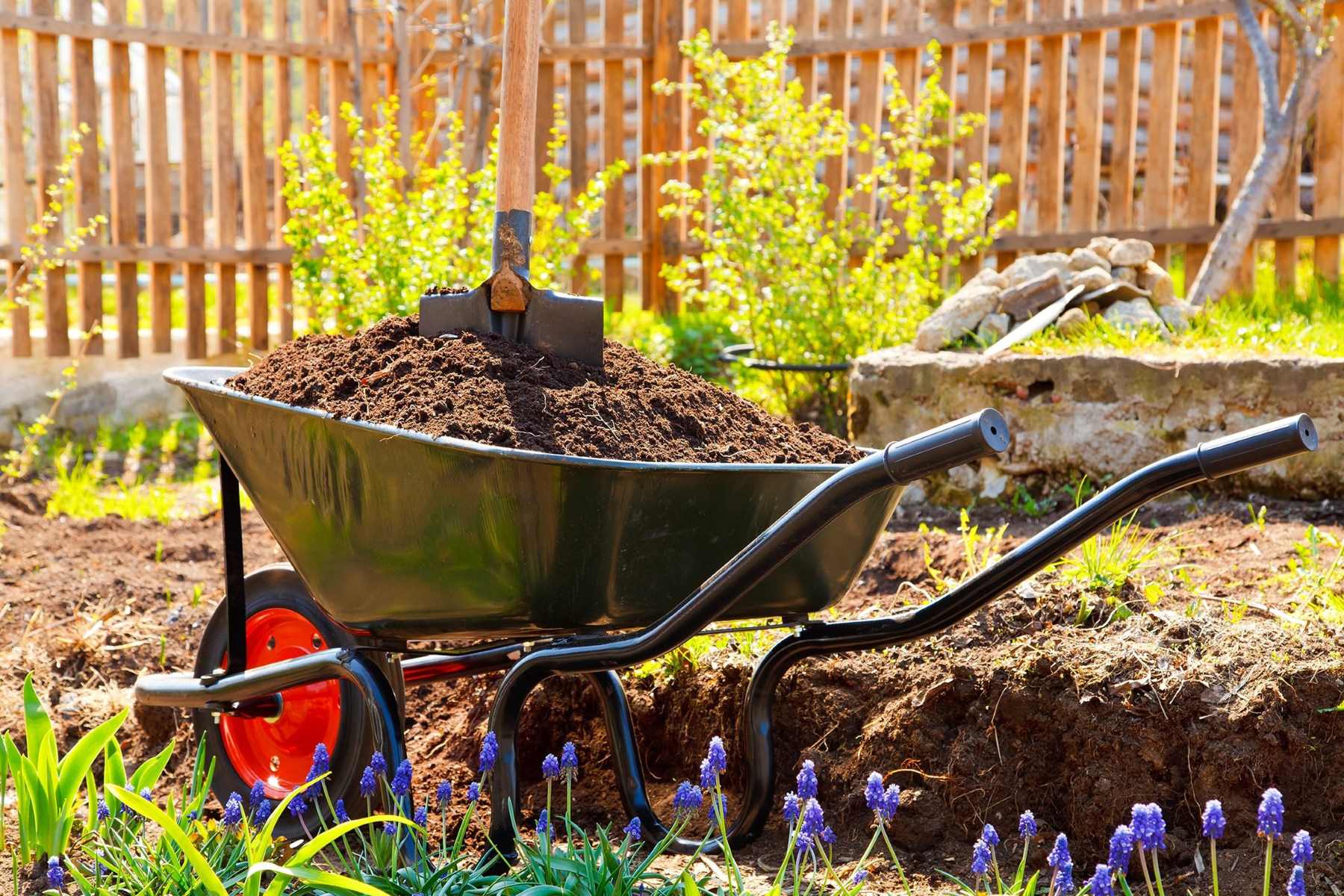

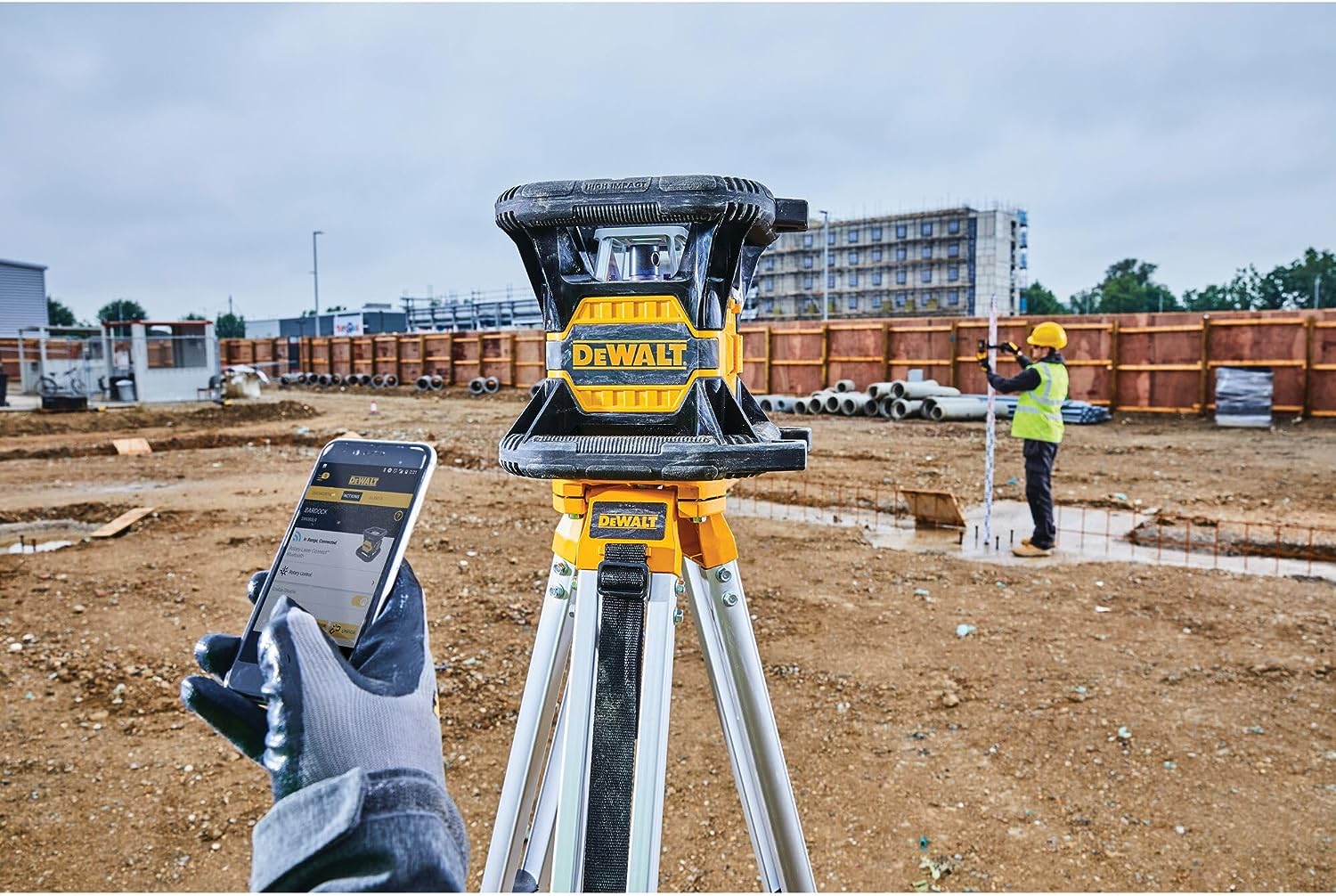




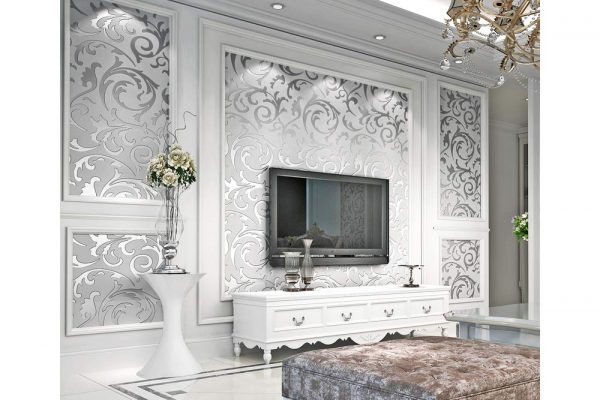
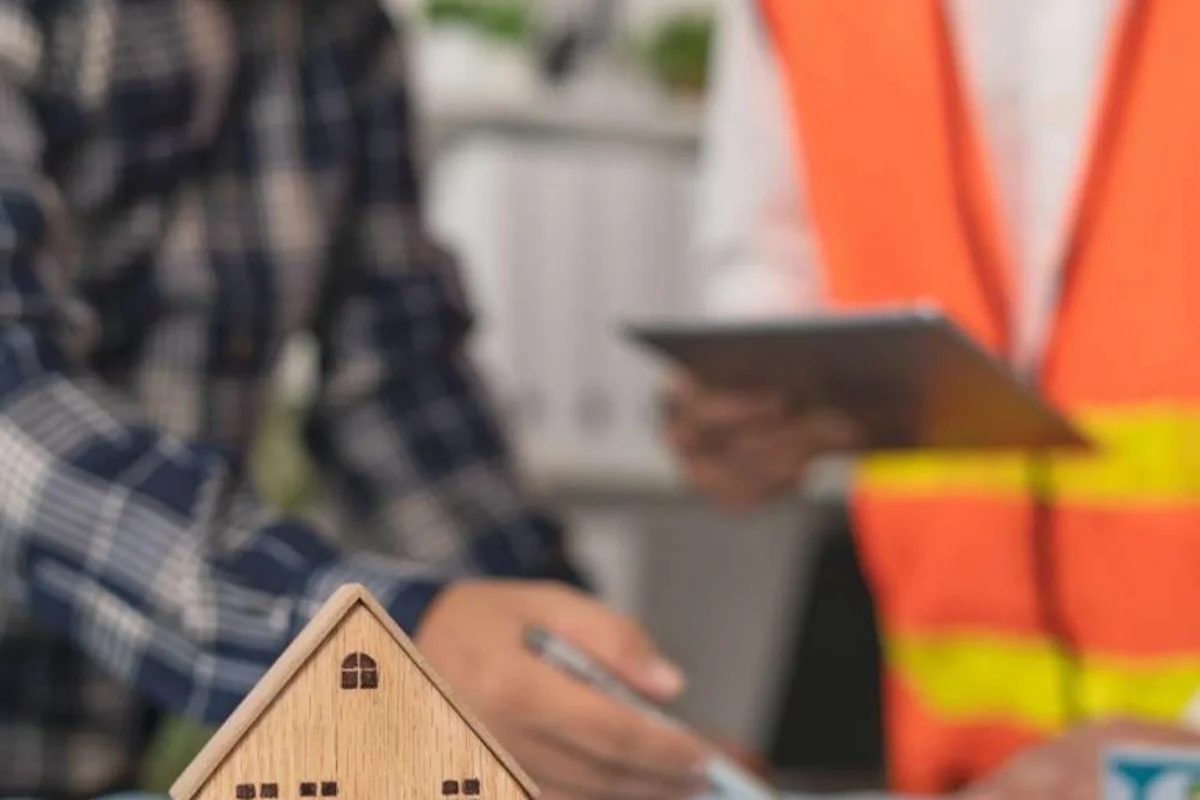

0 thoughts on “How To Design A Builder-Grade House”